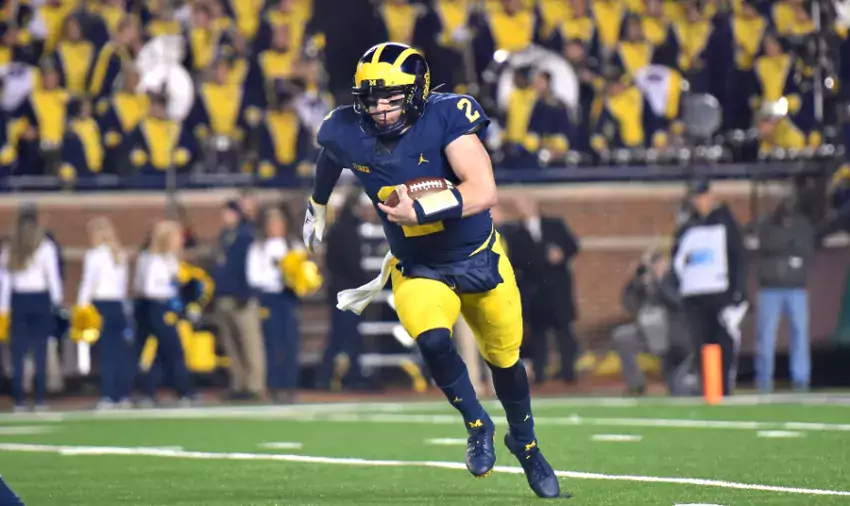
Neck Sharpies: Breaking Tendency

Michigan and Wisconsin are two of the last great bastions of Manball offense. In an age when offensive coaches are constantly trying to scheme their way to limiting the number of blocks that have to be made to win a down, the Wolverines and Badgers predicate their attacks on the concept that the more blocks they can force to happen, the more blocks the defense is going to lose. There's nothing particularly tricky about it. We are going to squeeze your defenders into a tiny, vertical space where the only directions that exist are North and South, and our heavy cavalry are charging downhill.
So of course the play of the game was a tweak to a zone-read option, a play so Rich Rodriguezian in its design you are a little bit mad at the end that the quarterback doesn't have dreads.
[Note: stephenrjking wrote a diary about this play as well]
Let's take a look at what Wisconsin thought they were defending, what they were actually defending, and how everybody's shoelaces suddenly came untied.
Ingredients:
- Zone Read
- Split Zone
- Arc Block
1. What's a Zone Read? I see you've missed the last 20 years of football. That's alright, it's a simple enough concept to explain, and a little flick of the mouse wheel if you're already up on the idea.
The zone read options an unblocked defender on the backside of an inside run play. You've seen it a thousand times. The quarterback holds the ball in the RB's hands while watching whatever defender is in that zone on the backside. If the defender forms up outside, the QB takes his hands off the ball and the RB can continue to run as if it's a normal running play. If the defender "crashes" toward the running back, the QB keeps it and runs around into the vacated space. The point is to free up a blocker by having the QB's read either hold that backside player where he can't help a run to the other side, or alternatively get that defender chasing a non-ballcarrier instead of protecting his edge. It doesn't really matter which base running play you pair it with: inside zone, power, zone stretch, Down G, whatever.
Takeaway: It's an important play because it made it possible to have a good running game from the shotgun. All defenses today know how to defend it, most commonly by having an end who finds himself unblocked "shuffle" in that purple zone to make the QB really have to think about his read, wasting precious moments while the defense is prying its way into the plausible gaps. Naturally, offenses that use the zone read have a favorite counter for this kind of thing.
2. A Split Zone. Split zone is basically just inside zone except you block the backside edge defender with an offensive player, usually a tight end, H-back, or fullback, who is blocking opposite and across the flow of the play.
A split zone run gives up some blocking on the frontside for an epic win on that backside, and is particularly punishing when that backside defender is wholly concentrated on forming up to threaten both sides of a zone read.
But again, this is a highly common play at all levels of football, so any defensive player taught to form up against a zone read is also going to keep the corner of his eye ready for any kind of trap block coming from the frontside. If one comes, he shifts his weight and meets the blocker, maintaining the edge of the defensive front and constricting space as much as possible inside of himself.
Takeaway: Any offense that runs a bit of zone read is also going to run a bit of split zone, and any player who'll be playing edge defender in a modern college defense has practiced how to convert a zone read shuffle to setting the edge against a trap block.
3. Arc Block. This is basically the opposite of a kickout block. It's usually used to describe the block by an H-back or tight end who "arcs" around a defender in an attempt to reach block him, i.e. seal him on the opposite side of where the offensive player lined up.
Takeaway: It's just a block.
[After THE JUMP: Stir with half a season of tendency and serve cold]
------------------------------------
The Setup
This play is not a base part of Michigan's offense. It's a supercounter to a base counter to a base play that they run mostly as a sideshow. The reason it broke 80 yards is not because it's some genius, unstoppable play, but because in a week of preparing for Michigan the last thing you're going to think to coach is what if they run something that spread 'n shred teams might run once in awhile to mess with how they're normally defended.
Also Michigan has had a tendency all year when they run (what looks like) zone read to not actually bother with the read—or at the very least Shea has been a super-reluctant keeper on zone reads. Here's Michigan's zone read/zone read counter game so far according to our charting:
| Opponent | ZR: Give | ZR: Keep | Split Zone | Arc Keeper | Total |
|---|---|---|---|---|---|
| Notre Dame | 7 | 1 | 1 | 9 | |
| WMU | 3 | 1 | 4 | 1 | 9 |
| SMU | 7 | 7 | |||
| Nebraska | 3 | 1 | 4 | ||
| Northwestern | 6* | 2 | 5 | 13 | |
| Maryland | 2 | 5 | 7 | ||
| Total | 28 (57%) | 4 (8%) | 15 (31%) | 2 (4%) | 49 |
* (Eubanks was arc blocking for the keeper on one of the Northwestern plays but Patterson handed it off)
Going into this game, Wisconsin's scouting told them if Michigan shows zone read action, you have an 88% chance of the ball going to the running back, either from the QB choosing to give or because they're going to slam a blocker into your formed up backside end. Sometimes he hands off even when the end is 100% in the red. Just look at some of these events from Brian's UFRs:
| Opponent | Ln | Dn | Ds | Player | Yards | Situation |
|---|---|---|---|---|---|---|
| Notre Dame | O44 | 3 | 3 | Higdon | 0 | Early 1st, down 0-7 |
| Again with the ZR that options nobody. Bad awareness on Runyan’s part as ND is creeping down a linebacker to the boundary, where there are no eligible receivers, and is absolutely going to send him. That means his guy is jumping inside. Runyan’s guy jumps inside. Runyan(-2) whiffs. But even if he does pin him inside Higdon is exposed to the LB and is hoping to break a tackle to avoid a TFL. This is dumb Hoke era read nobody stuff. RPS -2. | ||||||
| Notre Dame | M4 | 1 | 10 | Higdon | 2 | 4th Q, down 10-24, McCaffrey in |
| This is not a real read so Michigan is blocking 6 vs 7. MLB blitzes. Michigan does a pretty good job to pick him up and cover the DL slants, but Ruiz comes out on a DL and passes him off. This is correct and quick but now he resets his eyes to the overhang LB. This is the only guy he has a reasonable shot at; safety who started at 8 and is running at the LOS on the snap cuts down Higdon. RPS -2. Ruiz(+0.5), Onwenu(+0.5), Bredeson(+1). | ||||||
| WMU | M33 | 1 | 15 | Higdon | 2 | First play of the game |
| Patterson(-2) has a clear keep read with the backside end crashing and gives instead. DE doesn’t screw it up. This is a solid gain and maybe a bust right to the second level if DE shuffles, with Bredeson(+1) driving his man about two yards downfield and Ruiz(+1) finding and kicking a blitzball LB. Higdon’s about to test that gap and either Bredeson’s guy gets him or he’s to the secondary when the DE tackles. | ||||||
| SMU | M49 | 3 | 1 | Evans | 0 | Late-ish 2nd Q, tied 7-7 |
| Patterson(-3) must pull this. DE flies at Evans, TE flares to overhang LB, it will be a conversion. He does not pull. M paves a lane on the backside that Evans can’t use because of the DE. His frontside cut is futile. LB managed to get through Onwenu; Onwenu put him on the ground but he’s able to fall into Evans and grab his legs. This is a belly play on which I’m not going to ding Onwenu(+0.5). In fact he and JBB(+0.5) cave in the spot that the need to get the first down if the DE shuffles. | ||||||
| SMU | M43 | 2 | 5 | Evans | 0 | Early 2nd half, up 21-7 |
| Option nobody with just five blockers and this happens. JBB kicks a DE. Onwenu(-1) blocks down on a DT. He gets driven. Ruiz(-1) left immediately and no help for him so Evans cuts back and eats an unblocked LB. | ||||||
| SMU | O45 | 2 | 9 | Wilson | 7 | ^same drive, 4 plays later |
| Onwenu(+2) ejects the NT from the premises. MLB doesn’t fall for the zone action and cuts behind Ruiz’s block; Ruiz is able to shove him into McKeon(+1) and his guy and he goes down. Wilson(+0.5) finds the gap; JBB(+0.5) had a solid kickout. | ||||||
| Nebraska | M28 | 2 | 5 | Wilson | 4 | Late 2nd, up 37-0 |
| M lets a DE through free. He charges at the mesh point. Patterson gives. Is that a real read? Dunno. If it is this is a midline zone read that worked very well except for Wangler blocking the guy who they optioned and leaving the MLB untouched. If it is not then this is a trap play that has no one to account for the MLB. Going with the former. Wangler -2. Anyway Wilson(+2) does really well to spin off two tackles including the very unblocked MLB and grind out a good gain. | ||||||
| Northwestern | M37 | 1 | 10 | Higdon | 2 | Early 4th, down 13-17 |
| Another read nobody play. As soon as Gentry blocks instead of releasing the OLB over him fills on the running back and tackles unblocked and un-optioned. RPS -1. | ||||||
| Northwestern | O28 | 1 | 10 | Higdon | 1 | Late-ish 4th, down 13-17 |
| 7 man box but a corner blitz to make it eight. DT slides to Onwenu; JBB releases to LB level and has no angle. Onwenu(-1) driven into the backfield. Runyan(-2) gets ripped through pretty badly and that guy tackles at the LOS. No read, FWIW. | ||||||
| Northwestern | M41 | 3 | 5 | Higdon | 4 | Late 4th, up 20-17 |
| A must pull from Patterson(-2), who has absolutely nobody bothering with him on the edge. Handoff, possibly called Higdon(+1) cuts back to the giant acres of space Patterson spurned but can’t quite get there. Gentry(-1) got blown back by the Gaz. Can’t blame him but that’s a minus. | ||||||
| Maryland | O45 | 3 | 3 | Higdon | 0 | 3rd play of the game |
| Patterson(-2) has to pull this and does not. Backside end crashes and TFLs. JBB(+1) and Ruiz(+1) both took and moved their guys, FWIW. | ||||||
We've all got our theories as to why Michigan is either running fake reads from the Hoke offense or just has their keep slider set to Breaking Madden levels (mine is they hope to get their starting quarterback to the OSU game healthy for a 3rd time this century). The point is that opponents are seeing things like this:
…and picking up on the tendency.
Now, Michigan has shown the arc read before. They've run it three times in fact: once against ND, one against WMU in garbage time, and a third against Northwestern where Patterson handed it off correctly. The other two were with McCaffrey. So if you're preparing your defense for Michigan, an arc read keeper is hardly a top priority, especially since you only have a whiff of it—which well might have been just a fake—one time when Patterson's in.
If you're Jim Leonhard, and playing the numbers with limited practice time and limited head space for a bunch of first-year edge players, do you even bring up the arc, or do you take that 88% bet that crashing your DE against any kind of zone read action will get you a cleverer-than-Harbaugh moment or three? Why not crash and live with the consequences. It's not like Michigan has Denard back there.
The Play
It's the first play of the 2nd quarter after Wisconsin just punted Michigan back to its own 14 yard line in what's so far been a 0-0 slobberknocker of a game, so you might expect a little more 4-yards-and-a-cloud-of-dust here than usual. Michigan's in a pistol with an extra tight end on the line instead of a third receiver, but everything else is pretty standard for that ever-popular pistol zone-read offense. Everything here says Michigan's running a pretty standard play up the gut, perhaps with that crazy-conservative fake option. They're not.
It's called an Arc Read.
The base concept is Rich Rodriguez's zone read, even complete with a little WR screen pre-snap read if the defense is short of manpower out there. The tweak is what happens with the H-back's block. To feel it happen let's live it from Wisconsin's view.
At the snap, the End Man on the Line of Scrimmage (EMLOS) is the weakside linebacker, Zach Baun, from Brown Deer, Wisconsin. He's a redshirt junior, having sat out 2015 to learn linebacking after playing quarterback for his high school. He also missed last year for a foot injury. He's no rube: he's Academic All-Big Ten, and he's played in 18 games, starting 6, in the 21st century. The man knows when he's in Rich-Rodville.
The quarterback is turned his direction and looking at him. He's being optioned, or they want Baun to think he's being optioned. He checks for crossers, and sure enough, there's McKeon. Baun's already shuffled to the redder part of the zone read because of Michigan's history. Now he's seeing that crosser and thinking it's probably split zone. Time to form up and let this tight end feel the weight of four years in Cheese and Bratwurst Country, right?
Right?
Haha, foiled, you silly tight end. I am inside you and your running back is…wait whereareyougoing?
McKeon: Call it a….
Wildgoose chase.
So that takes care of the edge: faking the DE into using himself up on Chris Evans wins Michigan a McKeon block vs a true freshman cornerback. But we've still got a free linebacker whom Gentry couldn't seal inside, and that guy is Ryan Connelly, an all-conference type.
I've watched Wisconsin defend spread 'n shred offenses before and one thing they often do (and Michigan does too), and what I think they're doing here is exchanging gaps on the fly between their EMLOS and the linebacker behind. When Baun dives inside, Connelly is supposed to see this and take Baun's old (D) gap, since Baun's now effectively in Connelly's C-gap.
Defenses will call something like that on purpose all the time—it's called a Scrape Exchange—and Iowa used that strategy to end Michigan's tinkering with zone read games with the Pepcat package in 2016:
this is that band "Bear vs Shark" I mentioned in the podcast on Friday FYI. @Brian it was also a book, not a blog
When you do it on the fly, however, it's just a gap exchange. The Iowa play is designed to destroy a zone read, having the end crash (not read or look for crossers) and the LB replacing him hunt down the resulting keeper. What Wisconsin did with Connelly and Baun was have them read and react to each other. The difference is subtle, but al the difference on this play, because Gentry had a shot to seal Connelly off his release. Watch Gentry (#83, the TE on the top of the line), and Connelly (#43, the top ILB) on that replay cut:
It's one thing to get a DE crashing, especially when he sees split zone action. It's quite another to get the guy who's supposed to make the crashing guy right act so wrong. Connelly has no respect for the keeper when he jump-cuts past Gentry then crashes inside as well.
Why's he doing that? Because he thinks it's split zone too. Gentry's behavior—doubling that playside "DE" (I still want to call him a DT) to widen the gap—would be pretty normal for split zone. I mean he really kicked that DE (DT)'s ass. If it was split zone, and if McKeon's would-be block opened the other side of the gap, the walloping Gentry (and Runyan) gave that poor kid would create a lot of space for the back to cut downhill.
There wouldn't be much of a gap with Baun crashing and shouldering inside the H-back, and Connelly should ken that. But he's playing the odds: Michigan ran more split zone than zone read the last two weeks, and when Michigan looks like they're running zone read they might not even be reading anybody. Arc keeper? Pfaw. I'll believe it when they break tendency—and no, doing it with McCaffrey's kid doesn't count.
What We've Learned
Michigan probably isn't going to get to surprise anyone by keeping it again, and doesn't face another cornerback as unready to play as Rashad Wildgoose all season (Rutger has some cornerbacks—it's just everywhere else they're terrible). But there's a great benefit to making the defense play you as if the quarterback might keep it. They can't rush their defensive ends upfield, or crash multiple guy inside on your handoffs. Those actual split zones will have a lot more room to operate against shuffling ends, and the ends that shuffle will have to learn not to favor the handoff so much.
If indeed escorting Shea intact to this part of the schedule was the goal, that's accomplished. Michigan's next two opponents are both typically strong at defending QB rushing attacks with their base Quarters defenses, but that strength comes from walking down their safeties, a dangerous prospect when facing a strong vertical passing game and a quarterback you have to keep contained. Not only did Michigan get an important 81 yards to flip the course of this game for good: they've shown they're willing to make you defend all 11 guys on the field in their running game. No more odds. No more free RPS. If you're going to shut down Michigan's offense from here, you're going to have to win your own battles. The cavalry's come. LFG.
October 16th, 2018 at 3:44 PM ^
Question for Seth and other “offensive” minds, why is the Zone Read typically run with a inside zone blocking scheme?
Seems to me there would be more stress placed on the read defender if his teammates are all reading and eventually reading for an outside run, which would create more space for the QB to operate against read defender..
October 16th, 2018 at 4:47 PM ^
For some unknown reason, every time I see "LFG" at the end of a sentence on the blog, I get hyped inside. LFG
October 16th, 2018 at 5:32 PM ^
If Patterson had dreads, he outruns the whole defense. Just saying . . .
October 17th, 2018 at 2:52 AM ^
There's no chance a white guy with dreads gets past the drug testing and is able to play
October 16th, 2018 at 6:48 PM ^
Does McKeon block a Badger in the back at the Wisconsin 40? Why isn't that a penalty?
October 17th, 2018 at 7:31 AM ^
Great post. A couple thoughts:
1) I hate to mention 2017, but it's plays like this that continue to make me feel like 2017 was more about injuries and poor execution than it was anything the coaching staff was/wasn't doing. The overall point is this: if you're going to successfully run tendency-breakers - you have to have a successful tendency. We saw a lot of this type of thing in 2015 and 2016. The concept of "successful tendency" was non-existent in 2017 - and it showed. That these sort of things are happening again is significant improvement. Not only is this well designed from a coaching perspective, players executed and did the thing. We all applauded in kind. Yay.
2) There's a point above that mentions WR screen options. I thought there were multiple times where Michigan could have run WR screen against Wisconsin and I found myself wondering where that existed in the playbook, if at all. In the spirit of breaking tendencies, I find myself wondering if that's a wrinkle we've yet to see. Time will tell.
October 17th, 2018 at 5:45 PM ^
Excellent article.
There is some seriously great coaching going on here. Stayed tuned much more to come.
October 19th, 2018 at 12:32 PM ^
Seth the quality of your Neck Sharpies is OFF-THE-HOOK. You don't assume that everyone knows the logic of keep vs. give on a zone read (for example), which is great. Your graphics and descriptions completely solidified of bunch of things I picked over the years, but was not sure about. Keep writing at this level. It's awesome.
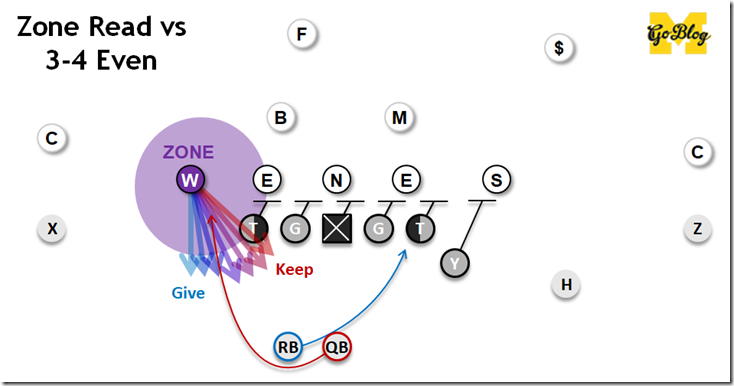
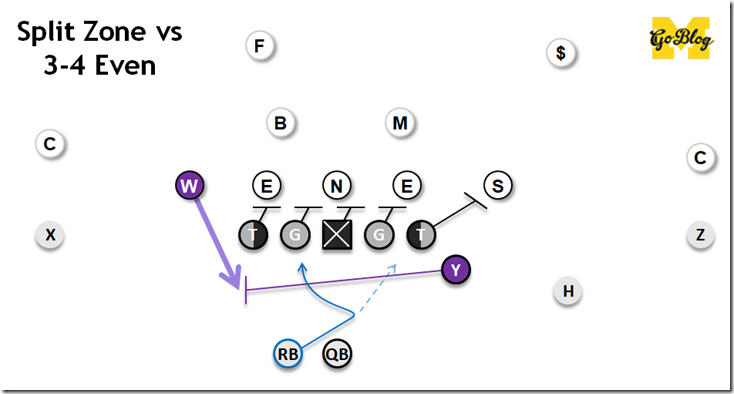
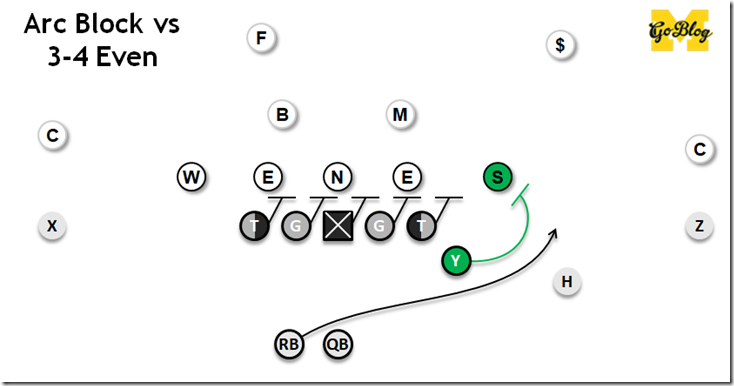
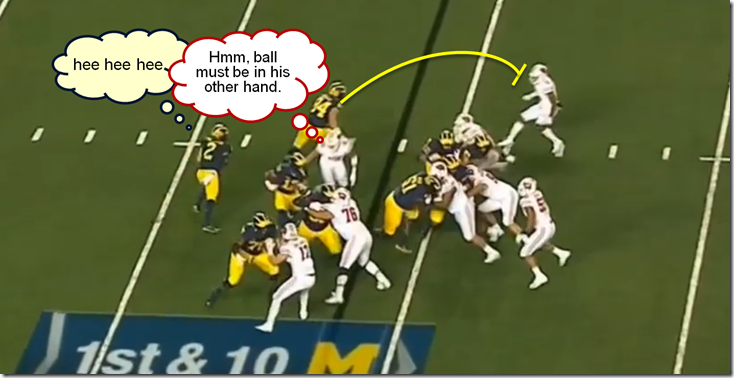
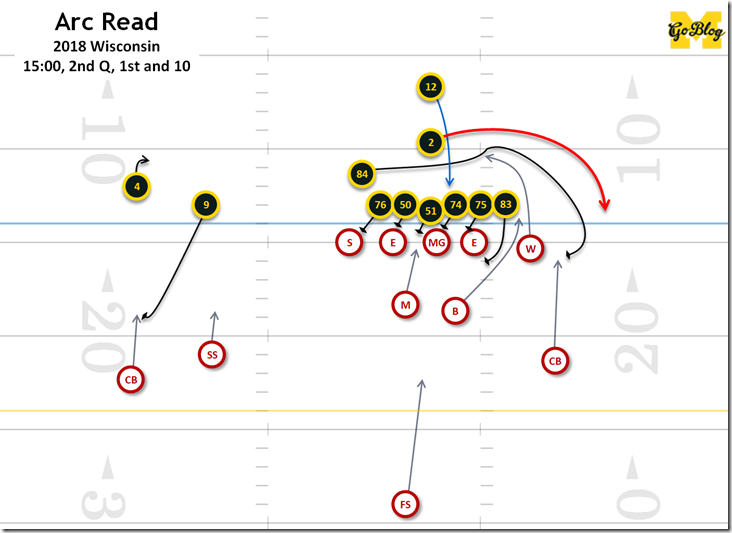
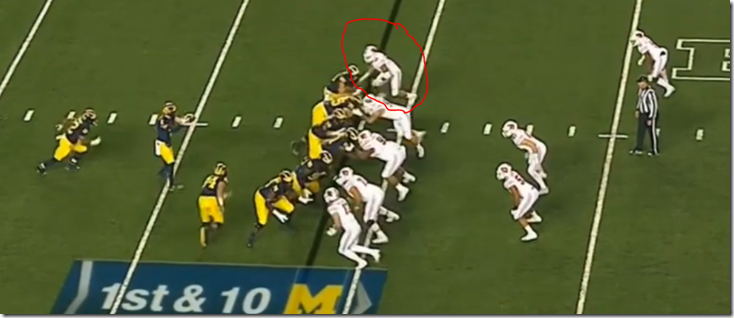
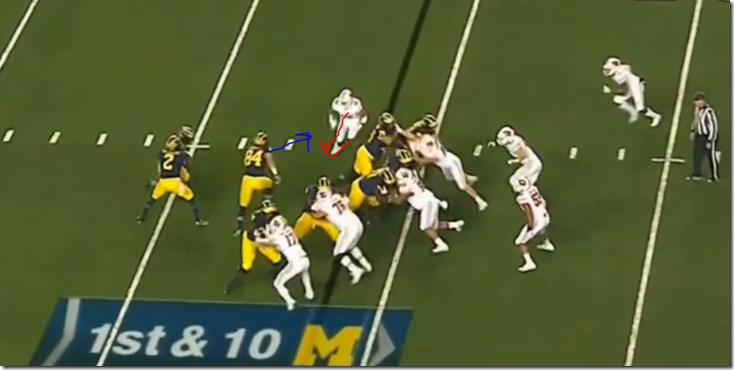
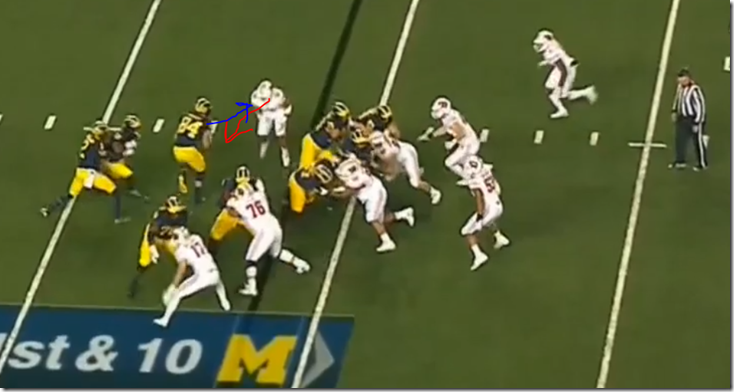
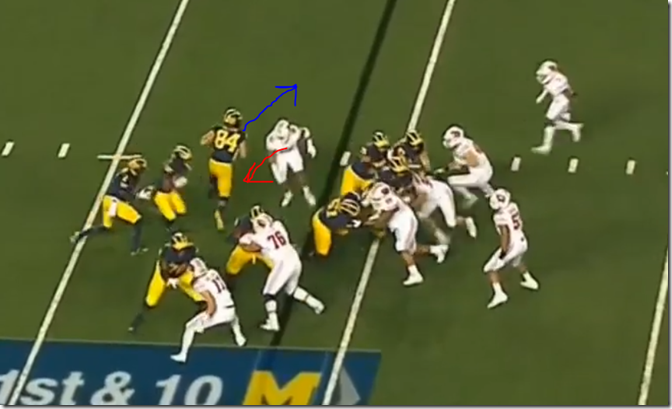
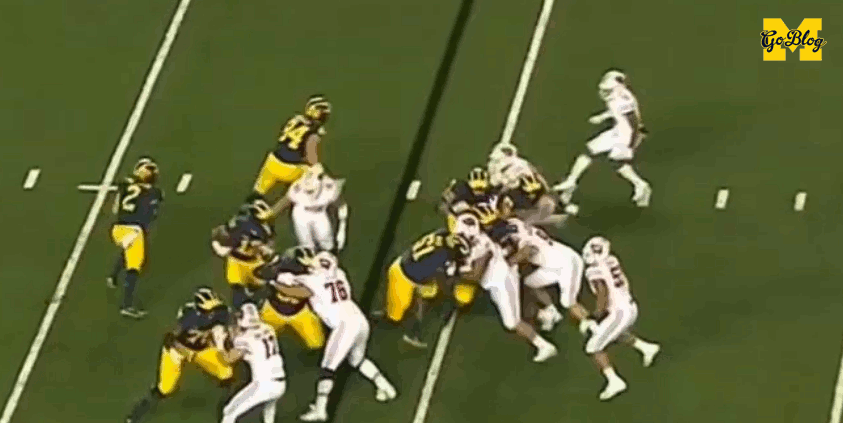
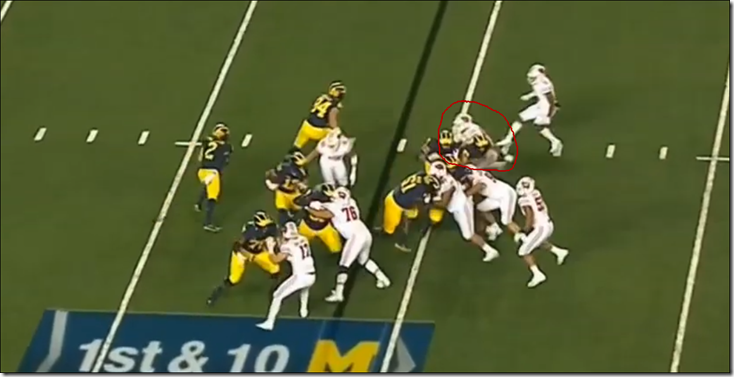
Comments